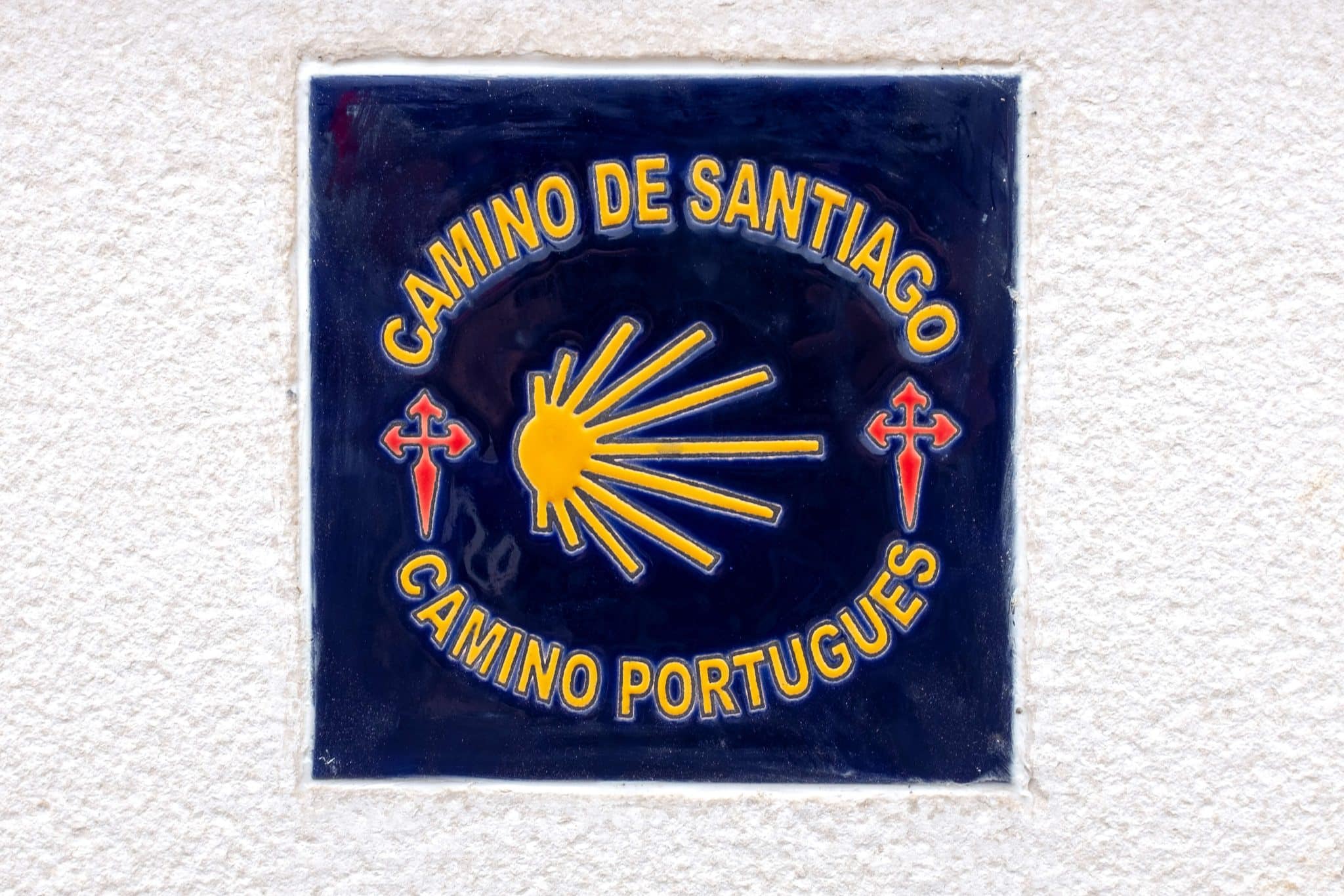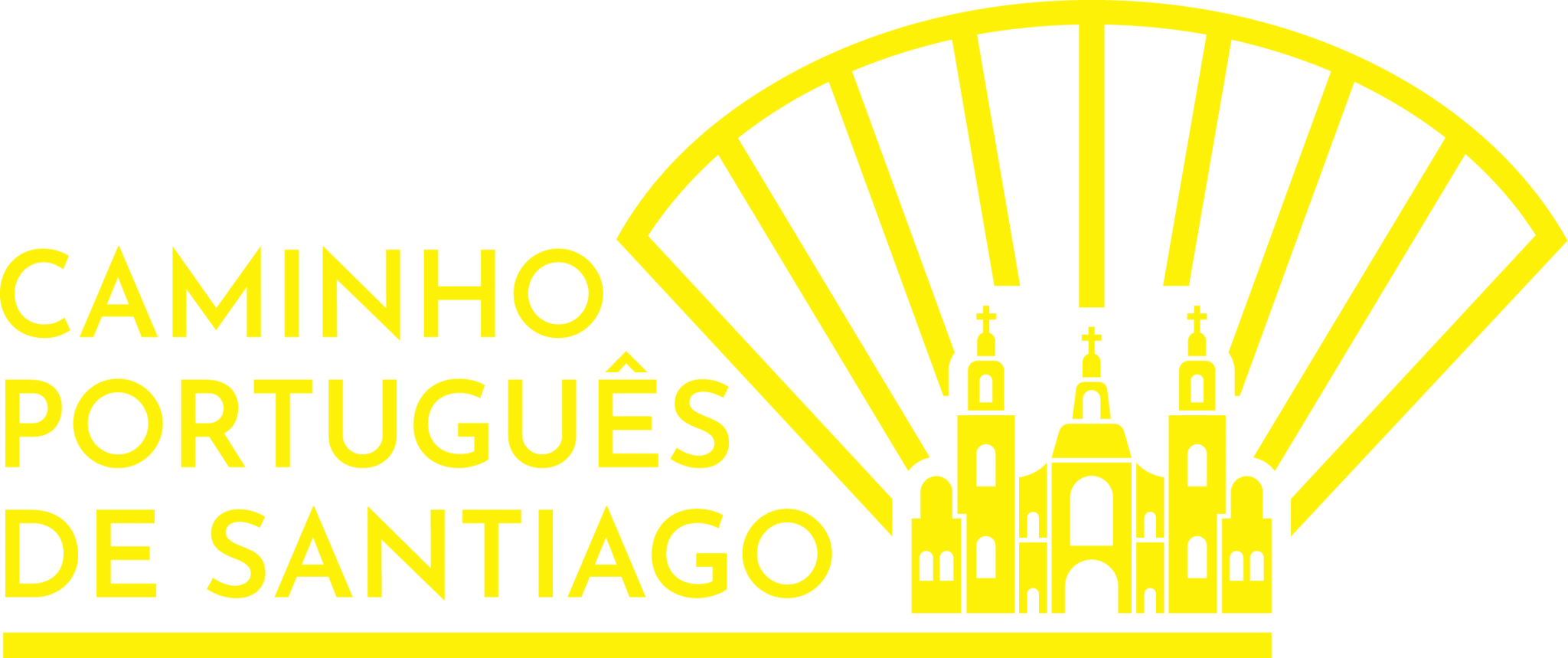The “Road Less-Traveled” Way

After the movie, “The Way” starring Martin Sheen, the American audience was awakened to The French Way of the Camino de Santiago. This route, taking pilgrims through Pamplona, Burgos, and León eventually leads to the famous Santiago de Compostela. While this path remains as popular as it was during medieval times, there are other lesser-known routes that offer equally enriching experiences. Among these, the Camino Portugues, or the Portuguese Way, stands out as a unique and meaningful pilgrimage. With fewer travelers, this “road less-traveled” provides cultural and scenic routes, offering a quieter and more intimate journey through the countryside and coasts of Portugal.
There are three routes one can take: the Central Route, Coastal Route, and Litoral Route. Each one provides pilgrim’s with a different experience based on preference of walking through historic villages or alongside the coast.
While the summer months tend to be the busiest time to travel the Camino Portugues, during the spring (May/June) or autumn (September/October) one can enjoy the rural towns and cities without worrying about traveling into major tourist cities, like Sintra.
In this blog, we outline a few hidden gems you can discover on the Central, Coastal, and Litoral Routes. Each location, whether you choose to do all or only a few, will enhance your pilgrimage, making it a more unique journey.
The Central Route
The Central Portuguese Way is the most traveled way to Santiago in Portugal, second only to the French route. Its fame is well-deserved, as the beauty of the landscapes combined with adequate signaling and well-equipped infrastructures help anyone make the miles to the Obradoiro square. Following the millennial cities of Portugal, which share their history with that of the path, and the villages that come alive with pilgrims’ every step, we will discover the wonderful nature of this country by the sea, its people, and its roads consecrated with the spirit of Santiago.
Paiva Walkways: Before beginning Stage 1 of this route, consider going to the Arouca Geopark located in the Aveiro District. This Portuguese iconic natural attraction, has 8km wooden walkways that span the Paiva River, offering stunning views of the gorge. This adventurous detour allows you to experience the beauty of the Paiva River and its surroundings.
Sanctuary of Bom Jesus do Monte: During Stage 2 you pass from Vairão to Barecelos, which is close to Braga. Spending an extra day in Barcelos allows for a 30km trip to a Baroque sanctuary with breathtaking views of Braga. This religious site has multiple chapels, sculptures, founds, and gardens. Also make sure to check out the Stairway of the Five Sense while you’re here too!
Alto Minho:Stage 3 takes you to Ponte De Lima to the region in between the Minho River and Lima River. Take some time to enjoy the green terraced scenery and sip on the white wine of the region – vinho verde. The main town, Viana do Castelo, has a medieval center with mansions, windy streets, and squares to explore. If you’re looking to relax, there’s also the Cabedelo and Moledo beaches!
The Coastal Route
The Portuguese Coastal Camino is a magical and ancient experience as it is one of the original routes of the millennial-old trail. Remarkably managed by our good friends who run the Caminha Hostel, this route follows the Jacobean paths previously traveled by pilgrims from times past. Therefore, every step is taken as if they too were strolling through the history of this territory. It’s also a route of options and choices, much like life itself. In Caminha, for example, to continue the historical and Portuguese path, you should head towards Valença, where you’ll meet up with the Central Camino.
Viana do Castelo: Before Stage 1, consider taking the journey here as it is easily accessed from Porto. This city is full of palaces, churches, convents, and fountains for you to explore. This medieval epicenter dates back to the 700s, with historical sites such as the Castelo de Santiago da Barra and Igreja Matriz do Castelo. Explore cultural museums, local cuisine, and go to Basilica de Santa Luzia for incredible viewpoints.
Vigo Cíes Islands: After completing Stage 5, take the following day to travel to Vigo and ride the ferry to these islands. This spot has gorgeous beaches to relax on and additional hikes up to panoramic viewpoints. Enjoy the peace and quiet of these untouched islands, especially for those preparing to start their camino in Vigo.
Pontevedra: After completing Stage 7, you end up here. Walk around Casco Antiguo and the notable squares of Plaza de la Leña, Plaza de la Verdura, and Plaza de la Herrería. One can also visit the Iglesia de la Virgen Peregrina, which is a church with the distinctive scallop-shell shaped floor plan dedicated to pilgrims on their way to Santiago de Compostela. While you’re here you can visit Bodegas Granbazan for wineries and vineyards.
The Litoral Route
The Litoral Trail of the Portuguese Coastal Camino is a hidden treasure of itself by the seaside. Alongside the Atlantic Ocean, this journey is a surprise with every breath of air that accompanies us throughout the route. The quaint villages nestled by the beaches of fishermen from times past form the most picturesque Portuguese landscape today. With the best in hospitality and gastronomy (for seafood lovers), this is an unmissable route.
Vila do Conde: Before beginning Stage 1 of your route, take the extra 17 km (17 miles) to visit here. This town has landmarks such as the Nossa Senhora da Guia Fortress and the Alfândega Régia (Royal Customhouse). Also known for its textile industry, this town hosts the annual Feira de São João (St. John’s Fair) celebrated in late June.
Caldas de Reis: After Stage 9, venture here to enjoy some much needed relaxation before your final 3 stages. This area is known for its thermal hot springs to soothe muscles halfway through the Camino de Portugues. Enjoy the mineral-rich waters, natural beauty, and relaxing benefits of the springs before continuing on your Way.
Baiona: Before beginning Stage 10, visit the coastal town across the Spanish border. Here there are beautiful beaches, historic sites, and the Monterreal Fortress. There is also a replica of one of Columbus’ ships, the Pinta, which serves as a reminder of the town being the first to hear news of the discovery of the New World in 1493.
Starting from Lisbon
While most pilgrims choose to start their Camino Portuges de Santiago from Porto, a handful choose to begin in Lisbon. Walking from Lisbon to Santiago de Compostela is 620 km (385 miles), taking around 4 to 6 weeks to complete. In Lisbon, you can explore the historic town of Alfama, go to the beaches, and try the famous Pastel de Nata. Besides these, you’ll be able to discover some remarkable cities and landmarks before reaching Porto. Here are a few more must-see spots:
Fátima: This town offers pilgrims with a religious and often reflective experience. Here, you can visit the Sanctuary of Fátima, Basílica de Nossa Senhora do Rosário, and other religious sites with cultural heritage. Engage in the local festivities and traditions here to strengthen your connection to Portugal’s rich history.
Tomar: Sitting at the top of the hill stands Knights Templar Castle, an important military building that houses the Convent of Christ. This attraction symbolizes the Reconquest and opening up of Portugal to other civilizations.
Golegã: The town known for being the capital of horse breeding, has a ton of regular fairs and events to attend. For those interested in art, visit Carlos Relvas former photography studio and see the contemporary sculptures of Martins Correia in the Martins Correia Museum.
Coimbra: The main sight to see here is one of Europe’s oldest universities, the University of Coimbra. The buildings inside of the university are where the first Portuguese kings lived as well. You can also walk around the beautiful gardens of Choupal, Quinta das Lágrimas, and Botanical Garden.
Arriving in Santiago
We have arrived! The city of Santiago de Compostela is the capital of Galicia. With the city’s cathedral as the main attraction, there are many tourists in Plaza Obradoiro. The pilgrimage ends here, and at 7 pm there is a sermon dedicated to all who have made the journey. If you arrive early, take the opportunity to visit the spaces that this town has to offer, especially the hidden-gems.
Cathedral de Santiago: You can take a tour of the cathedral’s rooftop and see the city from a bird’s eye view. These tours typically cost between $15-25.
Shadow of the Pilgrim Statue: This statue captures the essence of the Camino’s spirit. When you see the shadow, usually around afternoon to early evenings, it turns into a silhouette of a pilgrim on their way to the Cathedral de Santiago.
Queimada at Fogar do Santiso: At this restaurant they serve Queimada, a Galician ritual where a special liquor is lit up in flames. You’re greeted with a warm atmosphere here that brings people from all over together.
Are you ready to walk the “Road Less-Traveled” Way?
This “Road-Less Traveled” Way comes with many adventurous and beautiful side quests to discover more of Portugal. On top of these hidden gems, there are also 10 Curiosities about the Portuguese Way you should check out. Whether you’re considering walking the Camino de Santiago for the first time or tenth, choose the Portuguese Way and discover the “road less-traveled”. Embark on this journey and let the beauty and rich culture of Portugal enhance your pilgrimage experience.
